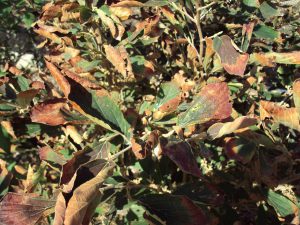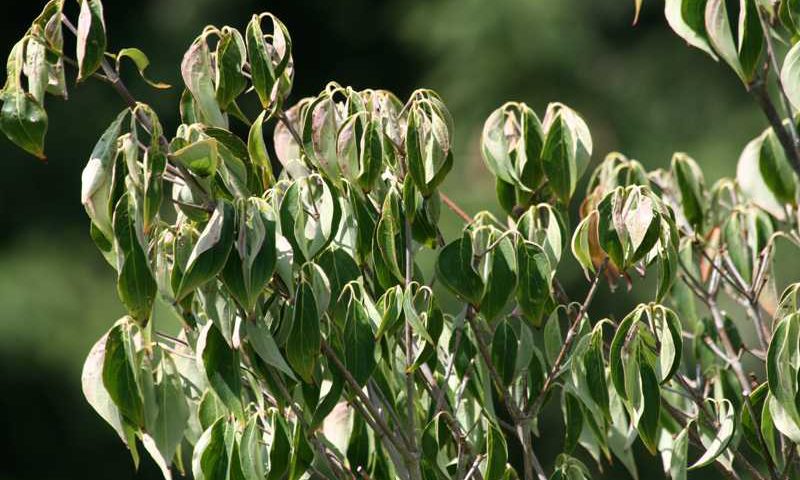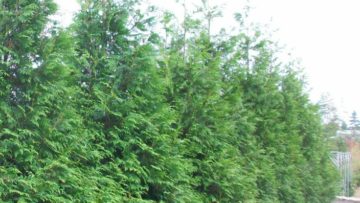Summer is hanging on tight, and that means added stress to the plants in your landscape. Providing the right hot weather plant care is critical to keeping things healthy through this tough part of the growing season.
Too much heat, too little water, too much wind, not enough mulch — the list of hot weather plant care needs is perhaps greater than any other season. The fluctuating temperatures and rainfalls we’ve seen all year have only complicated things.
If you fear that your landscape plants might be falling victim to late-summer heat, keep everything healthy by looking for the telltale signs of heat stress and dealing with them properly.
Hot Weather Plant Care | Signs of Distress
Not all plants react to heat and harsh sunlight the same way. Typically, one plant will show the signs of heat stress or water loss before any others. This plant is called the indicator plant, and it can act as an early warning for the rest of your garden.
The indicator plant will often be the first to show the signs of heat stress or water loss. These include:
-
Wilting of Leaves
-
Browning of Leaves
-
Early Leaf Drop
-
Dry Soil / Dry Root Zone
-
Discoloration / Spotting of Foliage
The first, surest sign of water loss is wilting. Plants will be able to recover from wilting and even some regular leaf drop. Browning of leaves is a sign that real damage is imminent. Once leaves go crunchy and brown, that foliage is gone for good. The browning of stems or branches could mean the entire plant is at risk of heat-induced death.
Stress is especially evident in new and improperly-placed plants. However, browning or leaf drop doesn’t mean your plants are dead. Look for buds to form below the damaged foliage, and test the stems for brittleness and green tissue beneath the bark.
If the stems and branches bend but don’t snap, your plant can recover.
Some plants and trees will drop their leaves in an effort to conserve water. While the signs above give you the best visual indicator of your plants’ ability to adapt to hot weather, it’s best to know the individual needs of each plant in your landscape.
How to Cope
Just like us, plants need more water during the summer to stay healthy. What would seem like overwatering in spring or fall could represent the right amount of water in your landscape during the summer.
Heavy watering applications aren’t the only way to provide hot weather plant care. Combine a regular watering schedule with these other methods to maximize your plants’ resilience:
-
Additional Mulch
-
Proper Watering
-
Provide Temporary Shade
-
Proper Plant Selection
Above all, watering is critical, but it’s also critical that it is applied in an ideal way. Be sure to water early in the morning or late at night, when evaporation will occur most slowly. Water deeply around the drip line to ensure that water makes its way to the roots, where uptake occurs, and take care not to spray foliage during the day. Rapid evaporation on the leaves makes the plants susceptible to spotting, bacterial or fungal infection and premature drop.

Adding additional mulch to the base of your plants not only retains more water and prevents runoff, but insulates the soil and shallow roots from direct sunlight. This will reduce your water consumption and provides for longer-lasting soil moisture through the heat of the day.
Dark-colored mulches can trap more heat than lightly-colored or natural mulches, so select your summer mulch material accordingly. Shredded hardwood is the standard, but dropped foliage, straw and grass clippings also provide exposure protection and may trap less heat in the soil.
Shade cloths can also be hung just above your shrubs to provide critical shade during particularly harsh heat waves.
The best defense against heat stress is in your initial plant selection. Native plants are naturally more resilient to changing weather conditions. Matching your plants to their place in the landscape — including considerations for sun/shade mix, moisture level and exposure to wind — will also help make the plants more suited to harsh summer conditions.
What to Avoid
-
Pesticides and Herbicides
-
High Exposure to Wind and Direct Sunlight
-
Improper Plant Placement
Summer is peak season for weeds. When they invade your planting beds, it happens fast. The temptation is to blast them all with herbicide, but dealing with the stresses of heat and water loss leave your plants weaker than they might be in spring or fall. This makes them especially susceptible to drifting or runoff herbicides.
Though a chore, hand-weeding is your best bet.
And, as always: Right Plant, Right Place. Starting with a design that places the right plants in the most ideal locations in your landscape is the best way to minimize your hot weather plant care efforts.
Keep plants that are susceptible to winds and direct sunlight out of the western and southern-facing areas of your property. This is where direct afternoon sunlight is the most intense. Always choose natives when possible, and be sure to match the natural soil moisture of your property to the plants you choose.
Beat the Heat!
Use these hot weather plant care tips to help navigate harsh summer conditions and keep your landscape healthy and vibrant through the end of the season.
If you’re looking to maximize your landscape to guard against these conditions, contact us to see how maintenance programs can help to keep your landscape resilient and summer-ready. As always, a new landscape design will create gardens that are well-suited for all seasons in our Northeast climate.



